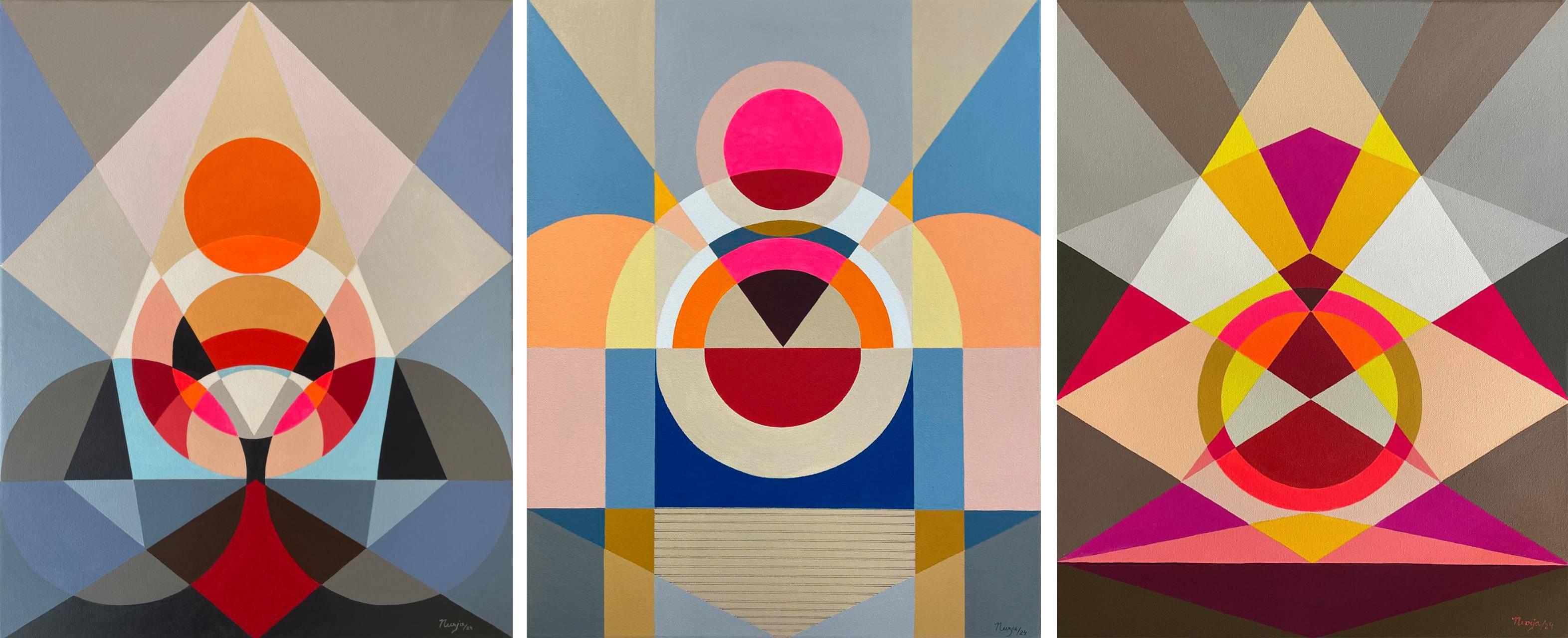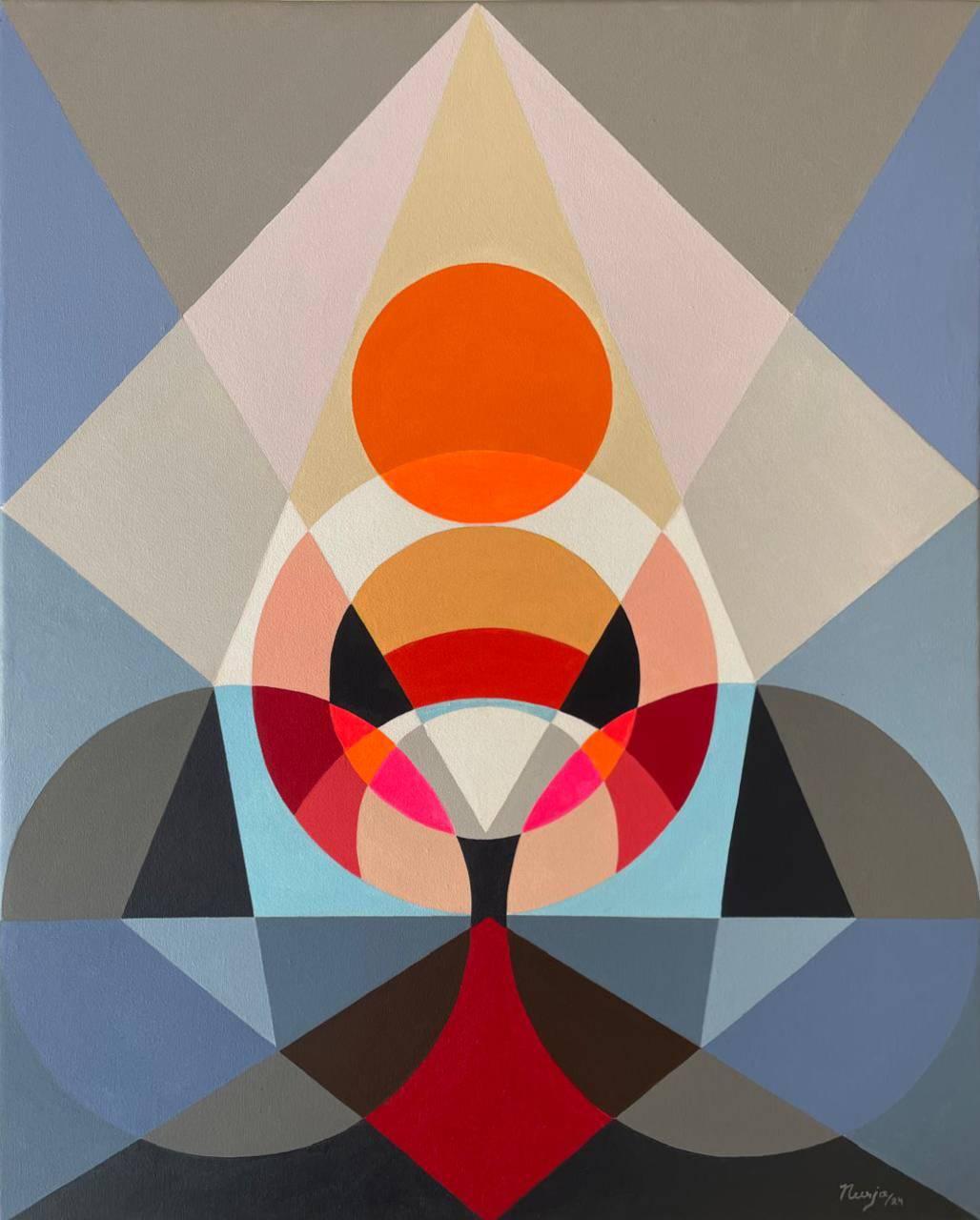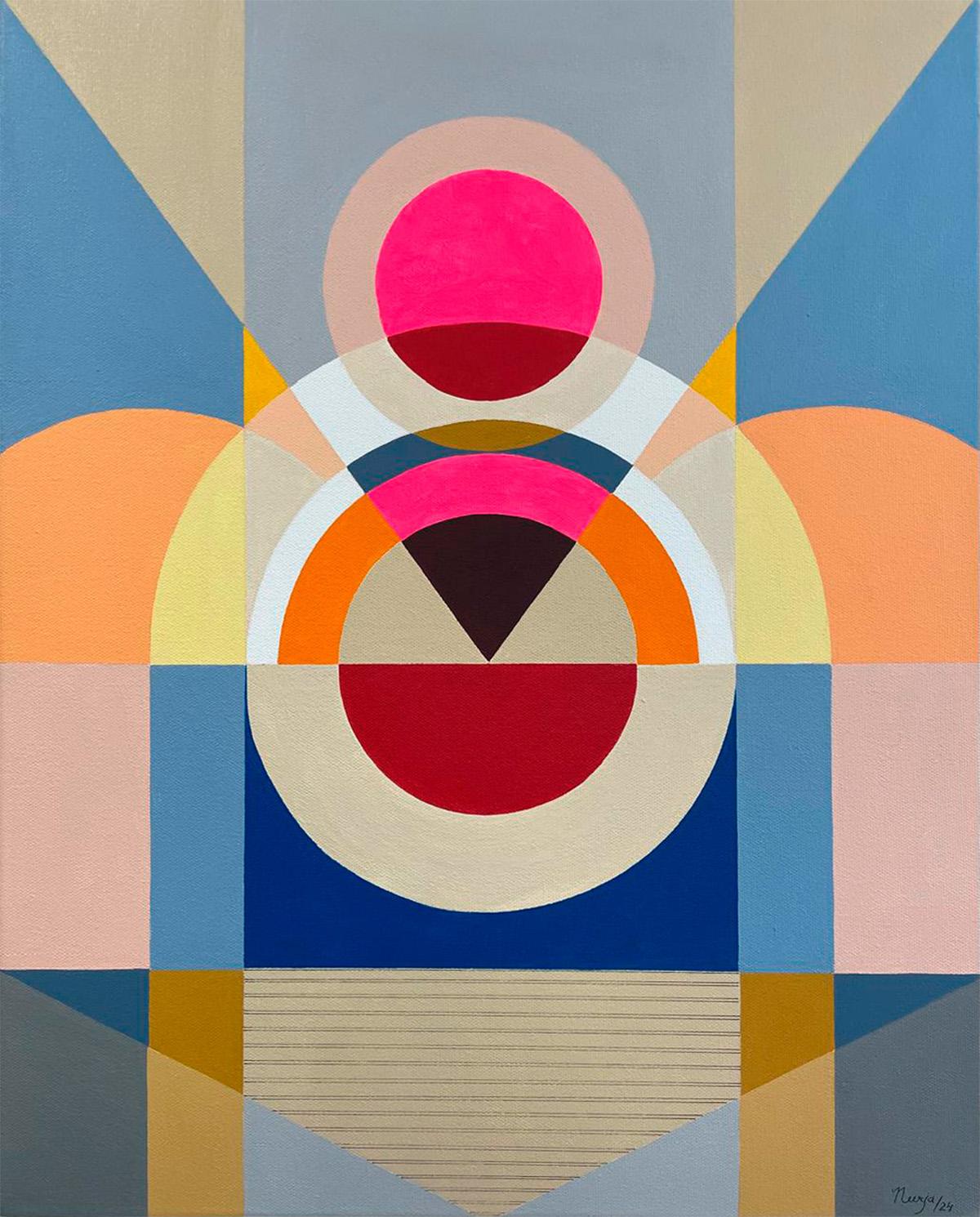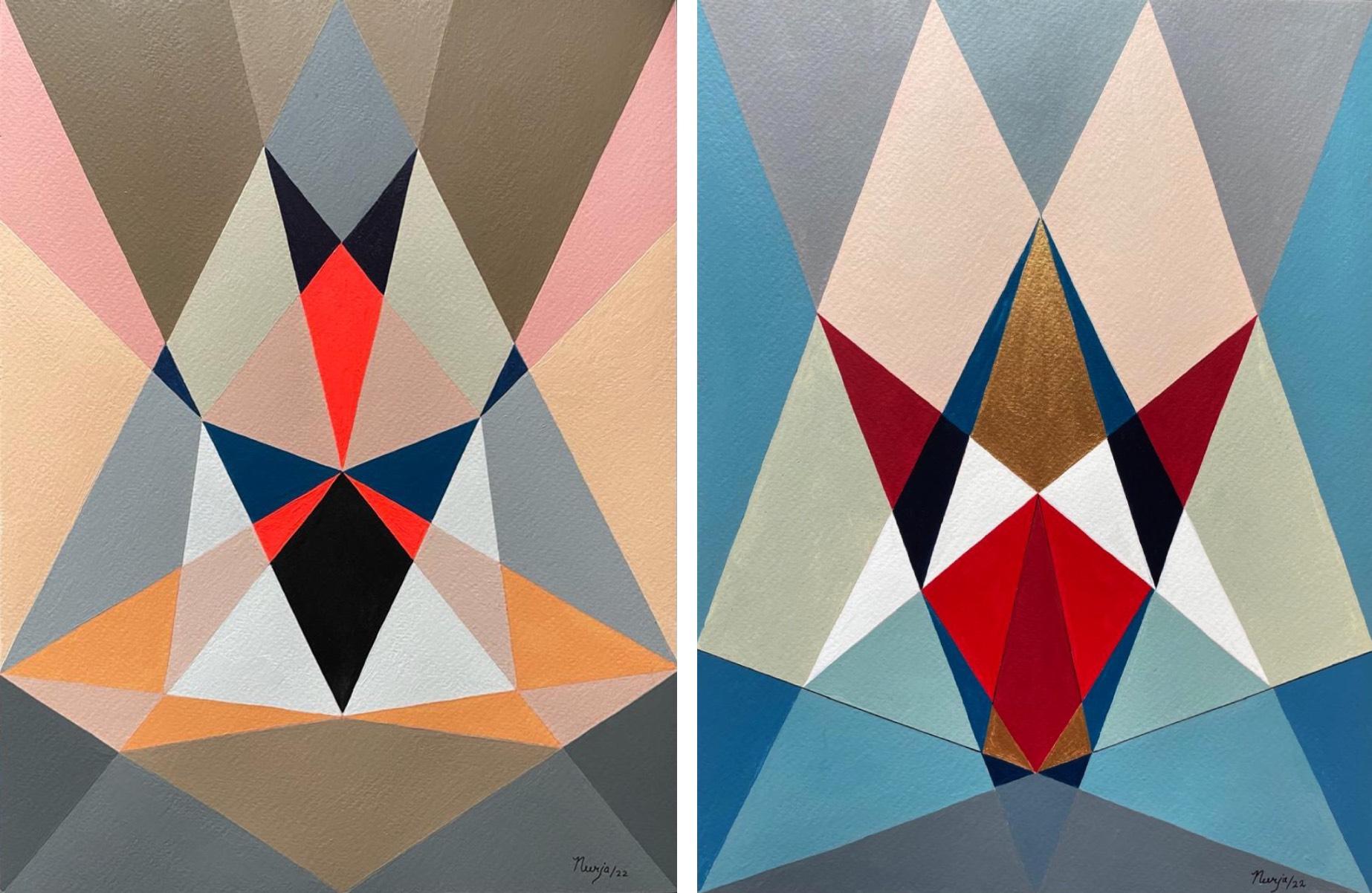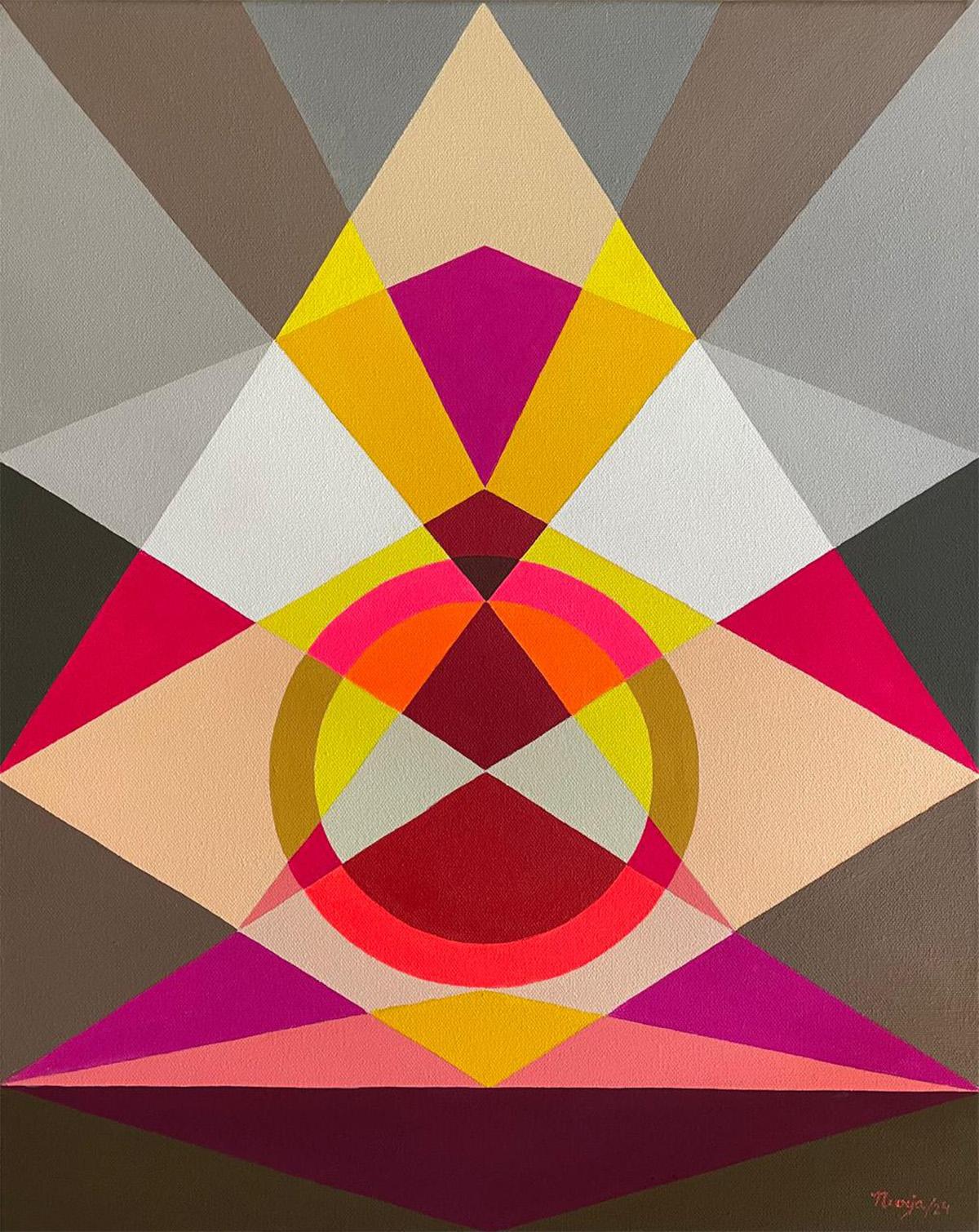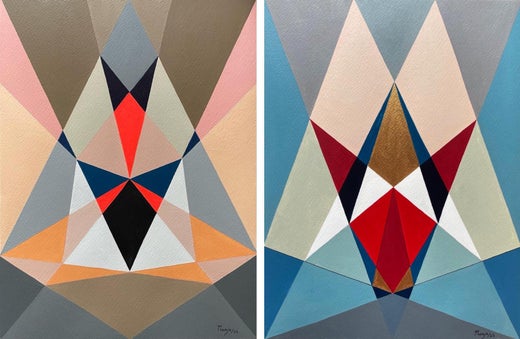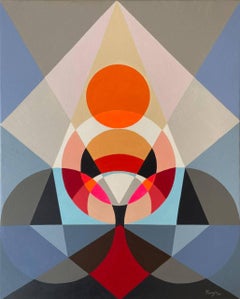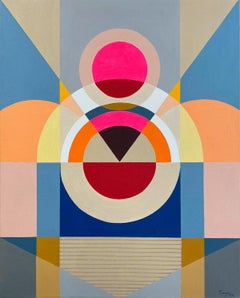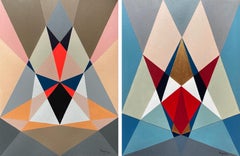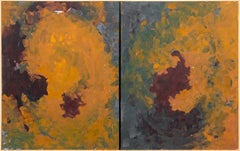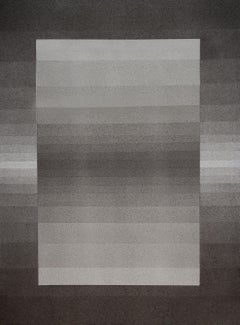Neerja Chandna PetersThe Self 16 and 17. Diptych. From The Self Series2024
2024
About the Item
- Creator:Neerja Chandna Peters (1970, Indian)
- Creation Year:2024
- Dimensions:Height: 20.08 in (51 cm)Width: 32.29 in (82 cm)Depth: 0.12 in (3 mm)
- Medium:
- Movement & Style:
- Period:
- Condition:
- Gallery Location:Miami Beach, FL
- Reference Number:1stDibs: LU453316735622
Neerja Chandna Peters
Neerja Chandna Peters, a physician residing in New Delhi, has been practicing abstract art for fifteen years. Her unique take on geometric abstraction has been the subject of research and cited in peer-reviewed journals. She has held four solo exhibitions, including one at the New England Regional Art Museum, Armidale, Australia; two in Portland, Oregon, USA; and at Bikaner House, New Delhi. She has received awards and been selected for international biennials, exhibitions, and museum projects, and her work is included in public and private collections, including those of museums.
- ShippingRetrieving quote...Shipping from: Miami Beach, FL
- Return Policy
More From This Seller
View All2010s Contemporary Abstract Paintings
Canvas, Acrylic, Archival Ink, Linen
2010s Contemporary Abstract Paintings
Linen, Acrylic
2010s Contemporary Abstract Paintings
Canvas, Acrylic, Archival Ink
2010s Contemporary Abstract Drawings and Watercolors
Paper, Acrylic
2010s Contemporary Abstract Paintings
Canvas, Acrylic
2010s Contemporary Abstract Paintings
Acrylic, Canvas
You May Also Like
2010s Abstract Abstract Paintings
Acrylic, Archival Paper
2010s Abstract Abstract Paintings
Acrylic
21st Century and Contemporary Contemporary Abstract Paintings
Canvas, Oil
2010s Abstract Abstract Paintings
Acrylic
21st Century and Contemporary Contemporary Abstract Paintings
Canvas, Oil
21st Century and Contemporary Abstract Abstract Paintings
Canvas, Mixed Media, Acrylic
